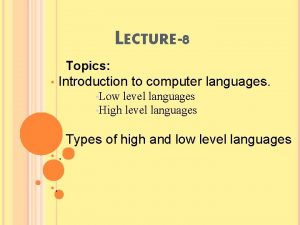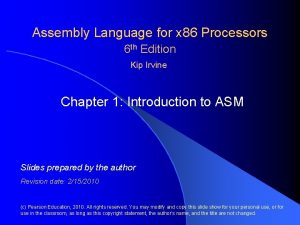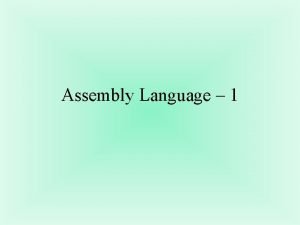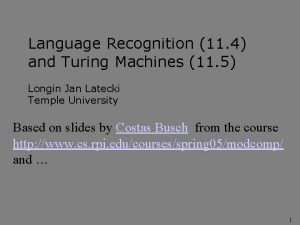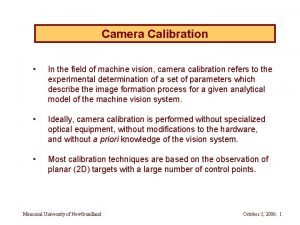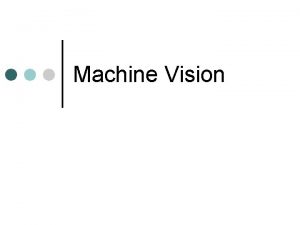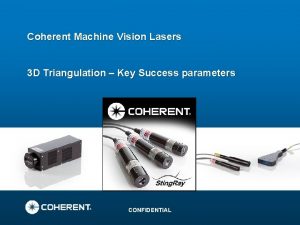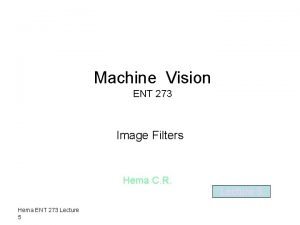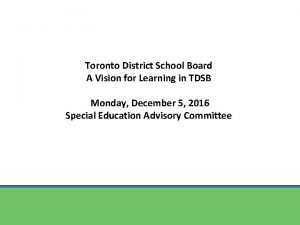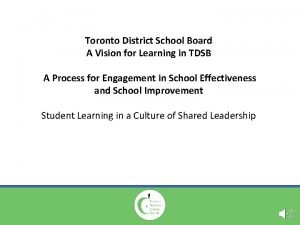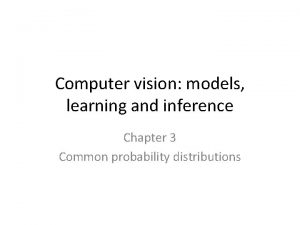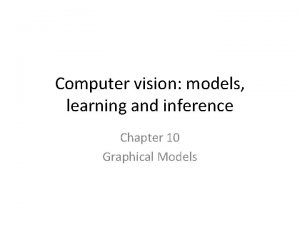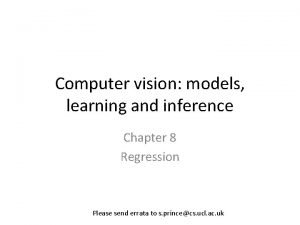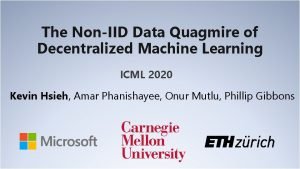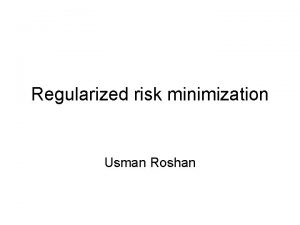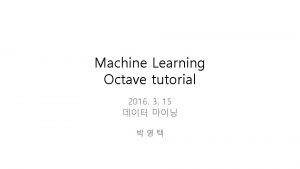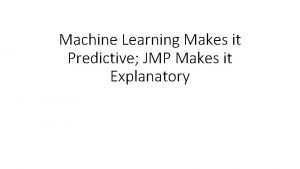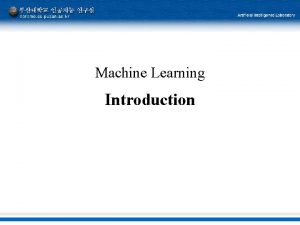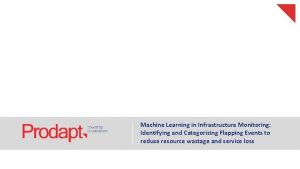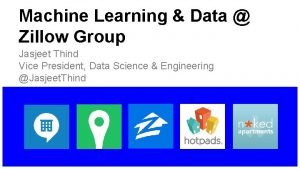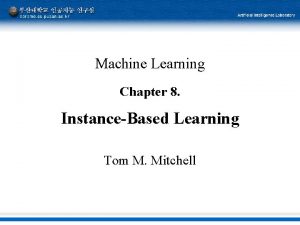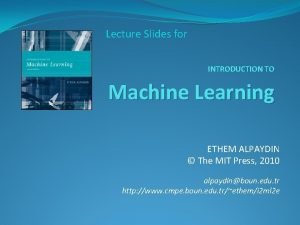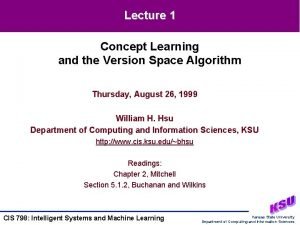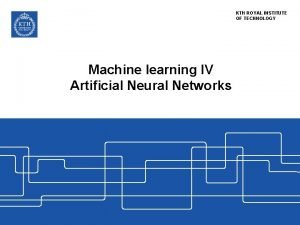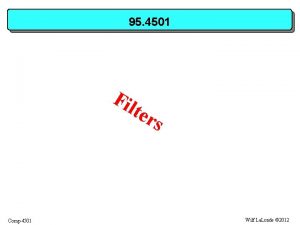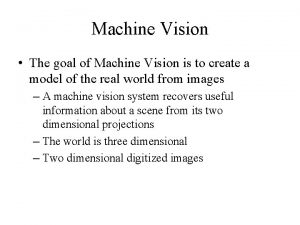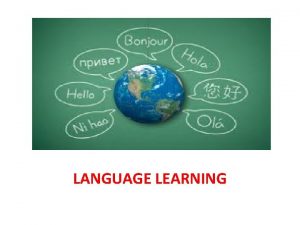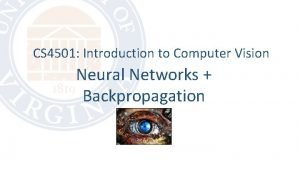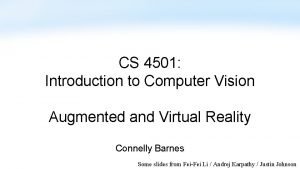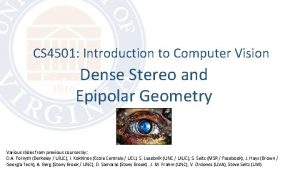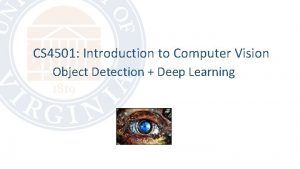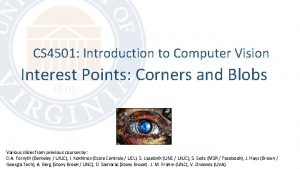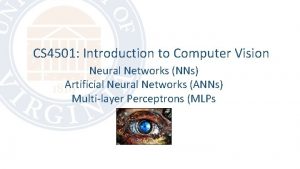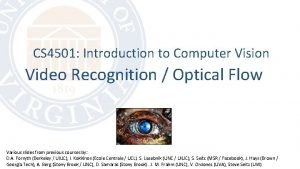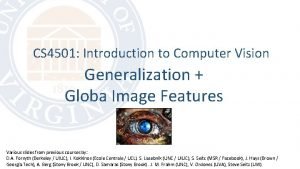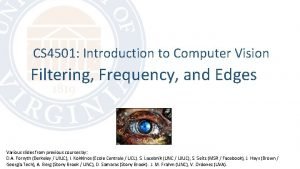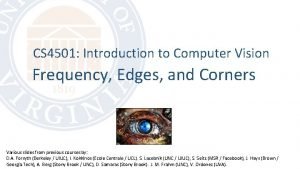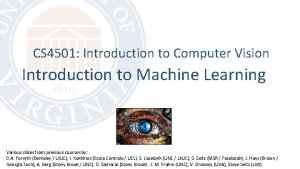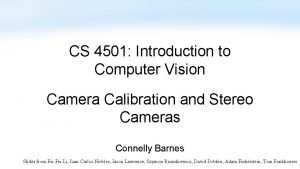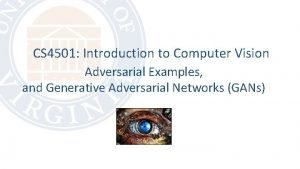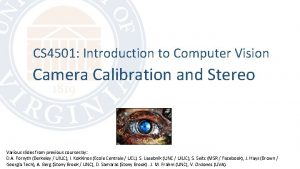Vision Language Machine Learning Primer CS 6501CS 4501


















































- Slides: 50

Vision & Language Machine Learning Primer

• CS 6501/CS 4501: Vision and Language • Instructor: Vicente Ordonez (Vicente Ordóñez Román) • Website: https: //www. vicenteordonez. com/vislang/ About the class • Location: Zoom – UVA Collab has the links for every class • Times: Tuesdays & Thursdays 3: 30 pm to 4: 45 pm • Office Hours: Fridays between 1 pm and 3 pm. • Discussion Forum: Campuswire (you must have received an invitation) 1

UVA Collab 2

https: //www. vicenteordonez. com/vislang/ 3

Machine Learning The study of algorithms that learn from data. 4

Supervised Learning vs Unsupervised Learning cat dog bear dog cat bear

Supervised Learning vs Unsupervised Learning cat dog bear dog cat bear

Supervised Learning vs Unsupervised Learning cat dog bear Classification dog bear dog cat bear Clustering

Supervised Learning… Classification Face Detection Language Parsing Structured Prediction cat

Supervised Learning… cat

Machine Learning – Regression vs Classification • Regression: y is a continuous variable e. g. in some interval of values e. g. in (0, 10] • Classification: y is a discrete variable e. g. could take a set of values {0, 1, 2, 3, 4} 10

Machine Learning – Regression vs Classification • Also notice that both y and x could be vectors – and they usually are for many problems we will study. • Also notice that f can be any function from the simplest you can think of to the most complicated composition of functions. 11

For instance, Linear Regression and Classification • Note: (w, b) are the coefficients in the linear regression, and will also be referred as parameters. • Also notice if x is a vector then w must also be a vector of coefficients. • A lot of work in Machine Learning and optimization is finding the right set of parameters (w, b) that can map any pairs of (x, y) values for a given problem. 12

ML Classifier / Regression models • K-nearest neighbors • Linear classifier / Linear regression • Naïve Bayes classifiers • Decision Trees • Random Forests • Boosted Decision Trees • Neural Networks 13

Supervised Learning – k-Nearest Neighbors cat dog bear cat, dog k=3 cat dog bear 14

Supervised Learning – k-Nearest Neighbors cat dog k=3 bear cat dog bear, dog bear 15

ML Classifier / Regression models • K-nearest neighbors • Linear classifier / Linear regression • Naïve Bayes classifiers • Decision Trees • Random Forests • Boosted Decision Trees • Neural Networks 16

Linear Regression Prediction, Inference, Testing Training, Learning, Parameter estimation Objective minimization

Linear Regression Example: Hollywood movie data input variables x production costs promotional costs genre of the movie output variables y box office first week total book sales total revenue USA total revenue international

Linear Regression Example: Hollywood movie data input variables x production costs promotional costs genre of the movie output variables y box office first week total book sales total revenue USA total revenue international

Linear Regression Example: Hollywood movie data input variables x production costs training data test data promotional costs genre of the movie output variables y box office first week total book sales total revenue USA total revenue international

Linear Regression – Least Squares Training, Learning, Parameter estimation Objective minimization

Linear Regression – Least Squares Training, Learning, Parameter estimation Objective minimization

Linear Regression – Least Squares

Linear Regression – Least Squares

Linear Regression – Least Squares …

ML Classifier / Regression models • K-nearest neighbors • Linear classifier / Linear regression • Naïve Bayes classifiers • Decision Trees • Random Forests • Boosted Decision Trees • Neural Networks 26

Neural Network with One Layer

Neural Network with One Layer Bias parameters

Neural Network with One Layer

Gradient Descent 1. Start with a random value of w (e. g. w = 12) 2. Compute the gradient (derivative) of L(w) at point w = 12. (e. g. d. L/dw = 6) 3. Recompute w as: w = w – lambda * (d. L / dw) w=12 30

Gradient Descent 2. Compute the gradient (derivative) of L(w) at point w = 12. (e. g. d. L/dw = 6) 3. Recompute w as: w = w – lambda * (d. L / dw) w=10 31

Gradient Descent 2. Compute the gradient (derivative) of L(w) at point w = 12. (e. g. d. L/dw = 6) 3. Recompute w as: w = w – lambda * (d. L / dw) w=8 32

Gradient Descent expensive Initialize w and b randomly for e = 0, num_epochs do Compute: and Update w: Update b: Print: end // Useful to see if this is becoming smaller or not.

Stochastic Gradient Descent (mini-batch) Initialize w and b randomly for e = 0, num_epochs do for b = 0, num_batches do Compute: Update w: and Update b: Print: end // Useful to see if this is becoming smaller or not.

In this class we will mostly rely on… • K-nearest neighbors • Linear classifiers • Naïve Bayes classifiers • Decision Trees • Random Forests • Boosted Decision Trees • Neural Networks 35

Why? • Decisions Trees https: //heartbeat. fritz. ai/understanding-the-mathematicsbehind-decision-trees-22 d 86 d 55906 by Nikita Sharma 36

Why? • Decisions Trees are great because they are often interpretable. • However, they usually deal better with categorical data – not input pixel data. https: //heartbeat. fritz. ai/understanding-the-mathematicsbehind-decision-trees-22 d 86 d 55906 by Nikita Sharma 37

That said • There have been efforts to combine neural networks and decision trees, where pixels first go through a neural network and then a decision tree structure. 38

Review • Image Classification Assignment from the Deep Learning for Visual Recognition class • NOTE: This is not an assignment for this class. Do at your own pace, no need to hand out anything. You can always ask us questions about it during office hours. 39

Regression vs Classification Regression • Labels are continuous variables – e. g. distance. • Losses: Distance-based losses, e. g. sum of distances to true values. • Evaluation: Mean distances, correlation coefficients, etc. Classification • Labels are discrete variables (1 out of K categories) • Losses: Cross-entropy loss, margin losses, logistic regression (binary cross entropy) • Evaluation: Classification accuracy, etc.

How to pick the right model? 41

Linear Regression – 1 output, 1 input

Linear Regression – 1 output, 1 input Model:

Linear Regression – 1 output, 1 input Model:

Linear Regression – 1 output, 1 input Model: Loss:

Quadratic Regression Model: Loss:

n-polynomial Regression Model: Loss:

Overfitting Underfitting High Bias Overfitting High Variance Christopher M. Bishop – Pattern Recognition and Machine Learning

Questions? 49
 Concept learning task in machine learning
Concept learning task in machine learning Analytical learning in machine learning
Analytical learning in machine learning Pac learning model in machine learning
Pac learning model in machine learning Pac learning model in machine learning
Pac learning model in machine learning Inductive vs analytical learning
Inductive vs analytical learning Analytical learning vs inductive learning
Analytical learning vs inductive learning Instance based learning in machine learning
Instance based learning in machine learning Inductive learning machine learning
Inductive learning machine learning First order rule learning in machine learning
First order rule learning in machine learning Eager learning algorithm
Eager learning algorithm Deep learning vs machine learning
Deep learning vs machine learning Cuadro comparativo de e-learning
Cuadro comparativo de e-learning Human vision vs computer vision
Human vision vs computer vision Low-level programming language
Low-level programming language Assembly vs high level language
Assembly vs high level language Difference between assembly language and machine language
Difference between assembly language and machine language Assembly languages list
Assembly languages list 13)turing machine is language recognizer of language.
13)turing machine is language recognizer of language. Second language vs foreign language
Second language vs foreign language Language
Language Machine vision calibration
Machine vision calibration Define machine vision
Define machine vision Machine vision lasers
Machine vision lasers Ent
Ent Vision for learning tdsb
Vision for learning tdsb Tdsb vision for learning
Tdsb vision for learning Computer vision: models, learning, and inference
Computer vision: models, learning, and inference Computer vision models learning and inference
Computer vision models learning and inference Computer vision: models, learning, and inference pdf
Computer vision: models, learning, and inference pdf Computer vision: models, learning, and inference
Computer vision: models, learning, and inference Finite state machine vending machine example
Finite state machine vending machine example Mealy and moore machine
Mealy and moore machine Moore machine to mealy machine
Moore machine to mealy machine Energy work and simple machines chapter 10 answers
Energy work and simple machines chapter 10 answers Bsp classification
Bsp classification Expected risk machine learning
Expected risk machine learning Microsoft sql server machine learning
Microsoft sql server machine learning Azure machine learning studio
Azure machine learning studio Octave machine learning
Octave machine learning Jmp neural network
Jmp neural network Tom mitchell cmu
Tom mitchell cmu Machine learning in infrastructure monitoring
Machine learning in infrastructure monitoring Valerie du preez
Valerie du preez Jasjeet thind
Jasjeet thind Tom mitchell machine learning solutions chapter 3
Tom mitchell machine learning solutions chapter 3 Introduction to machine learning ethem alpaydin
Introduction to machine learning ethem alpaydin Version space learning
Version space learning Kth machine learning
Kth machine learning Machine learning andrew ng
Machine learning andrew ng Introduction to machine learning andrew ng
Introduction to machine learning andrew ng Hypothesis space in machine learning
Hypothesis space in machine learning













